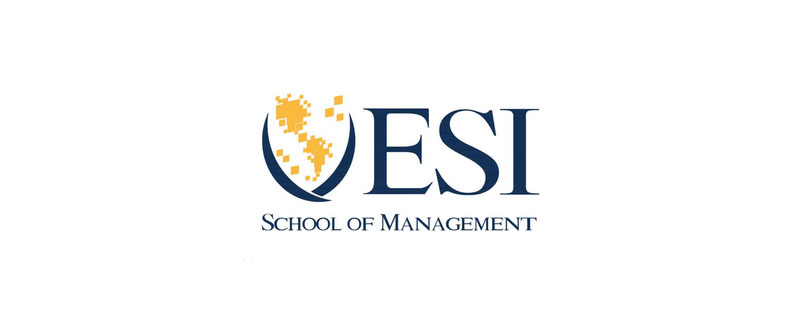
The American Science Citation Index (SCI) was founded in 1957 by the Institute for Scientific Information (ISI) in Philadelphia, USA. A citation database founded and published by the Institute of Information Science (ISI) in 1961. SCI (Science Citation Index), EI (Engineering Index), and ISTP (Index of Scientific and Technological Conference Proceedings) are the three world-famous scientific and technological literature retrieval systems. They are internationally recognized as the main retrieval tools for scientific statistics and scientific evaluation, among which SCI is the most popular. important. The founder of SCI is Eugene Garfield (Eugene Garfield, September 16, 1925-2017).

#Over the past 50 years, the SCI database has continued to develop and has become the most important large-scale database in the contemporary world, ranking first among the six famous international retrieval systems. (Recommended learning: PHP Video Tutorial)
In addition, ISI has also published the Social Sciences Citation Index (SSCI) and the Arts and Humanities Citation Index (A&HCI). It is not only an important retrieval tool, but also an important basis for the evaluation of scientific research results. It has become the most authoritative and important evaluation system in the world for basic research and applied basic research results. It is one of the important indicators to evaluate the academic level of a country, a scientific research institution, a university, a journal, and even a researcher.
The contents of the journals included in SCI mainly involve basic scientific research fields such as mathematics, physics, chemistry, agriculture, forestry, medicine, and biology. The selected journals come from more than 40 countries and more than 50 languages. Among them, the main Countries include the United States, the United Kingdom, the Netherlands, Germany, Russia, France, Japan, Canada, etc., and some publications from China (including Hong Kong, Macao and Taiwan) are also included.
Essential Science Indicators (ESI) was launched in 2001 by the Institute of Science and Technology Information (ISI), a world-renowned academic information publishing organization, to measure scientific research performance. , a basic analysis and evaluation tool for tracking scientific development trends. After the reorganization of ISI's assets, ESI became part of Thomson Reuters. ESI is a quantitative analysis database established by Thomson Reuters based on more than 10 million document records of more than 11,000 academic journals around the world included in SCI (Science Citation Index) and SSCI (Social Sciences Citation Index). ESI has become one of the important evaluation index tools commonly used around the world to evaluate the international academic level and influence of universities, academic institutions, countries/regions. The 22 disciplines set up by ESI are: biology and biochemistry, chemistry, computer science, economics and business, engineering, earth science, materials science, mathematics, comprehensive interdisciplinary subjects, physics, general social sciences, space science, and agriculture Science, clinical medicine, molecular biology and genetics, neurology and behavior, immunology, psychiatry and psychology, microbiology, environmental science and ecology, botany and zoology, pharmacology and toxicology.
In January 2012, the university research team of China Alumni Association Network took the lead in including the "total citation frequency of ESI papers" that ranked 1% of Chinese universities in the world as an indicator reflecting the university's "academic reputation" into the evaluation of Chinese universities, guiding Universities improve their independent innovation capabilities and academic research levels; and based on the statistical results of ESI papers from January 1, 2000 to December 31, 2010, the "2012 Chinese University ESI Paper Ranking" was launched as a way to evaluate the university's scientific research capabilities and academic reputation. important symbol.
The main feature of ESI is that it has total citations and sub-disciplinary citations, including average citations; the disadvantage is that it does not distinguish between authorship and participation when counting, and as long as it involves your article, it will be counted, so that It is easy to bias the results.
SCI’s statistics are based on one unit and are relatively authentic. It is characterized by impact factor, including data on area, number of articles by subject, and average impact factor, but there is no data on citations of articles.
For more PHP related technical articles, please visit the PHP Graphic Tutorial column to learn!
The above is the detailed content of The difference between esi and sci. For more information, please follow other related articles on the PHP Chinese website!
 win10 bluetooth switch is missing
win10 bluetooth switch is missing
 Digital currency quantitative trading platform
Digital currency quantitative trading platform
 What are the new features of es6
What are the new features of es6
 How to configure the pycharm environment
How to configure the pycharm environment
 SVN ignores file settings
SVN ignores file settings
 How to solve the problem that win11 antivirus software cannot be opened
How to solve the problem that win11 antivirus software cannot be opened
 Introduction to the usage of axis function in Matlab
Introduction to the usage of axis function in Matlab
 Usage of sprintf function in php
Usage of sprintf function in php